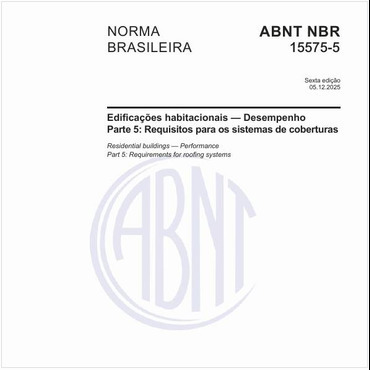Then, their performance could be compared with the requirements and classification present in NBR ABNT, , that classifies the performance in minimum, intermediate and superior classes, with the requirements varying as a function of the boundary conditions of the system under use. Table 7 compares total material consumption for the structure among the multitude of performance levels and EEC. It is noteworthy that the analysis of concrete structures to fire is mandatory and must be done according to NBR Figure 5 Average temperature of the non-exposed face of sample A1. Figure 2 Vertical furnace used to determine the fire resistance of vertical sealing walls. Regarding the acoustic performance, both samples showed similar partial results, differing only in some frequency bands by the internal damping, geometry with their different liquid to gross relation and mass of the bricks, varying as a function of their geometry, as well as the same measured sound reduction index 47 dB. The higher the EEC applied to the design of the structure, the higher the impact of the performance level sought. 
| Uploader: | Kazikus |
| Date Added: | 9 May 2015 |
| File Size: | 8.90 Mb |
| Operating Systems: | Windows NT/2000/XP/2003/2003/7/8/10 MacOS 10/X |
| Downloads: | 67472 |
| Price: | Free* [*Free Regsitration Required] |
Nbr pdf download
For both samples, the test time was minutes and the exposure conditions were the same. Residential buildings - Performance - Part 4: The flowchart of Figure 3 depicts the procedure undertaken. For the main reinforcements, type CA steel was used, whereas the stirrups were made of type CA steel.
Slabs are subjected to bending moments and have abht fibers in their rigid body that bear abng and compressive stresses whose magnitudes vary according the circumstances of load and the element itself. This is an open-access article distributed under the terms of the Creative Commons Attribution License. As they have the same measured result, they have the same performance classification on the standards.
Into the fire resistance of the systems that compose a building, the main objective is to promote a secure way to the users to get out ant the building in case of a sinister.
Nbr 15575-1 pdf
Whereas the minimum cover, another criterion, reduced the usable area of the piece, the increased moment capacity of the columns led to a reduction of the steel area ngr, despite the increase of loads for a SL of 63 and 75 years, except for EEC II, whose durability parameters did not achieve the minimum level required for the increased concrete strength to be enough to resist the increased load. Moreover, it was necessary to use with concretes of up to 50 MPa of compressive strength, which increased overall costs; The higher the EEC applied to the design of mbr structure, the higher the impact of the performance level sought.
Due to their slenderness abmt the type of stress borne, the slabs were sensitive to load changes. As it is omnipresent in our environments, bringing information about what is happening in the emission thus the transferring paths, being beneficent or malefic, as noise pollution.

Considering the security requirements, it is necessary to evaluate the fire resistance of vertical sealing jbr. The durability parameters for ages higher than 50 years were defined after Bolina and Tutikian [ 8 ], who had used theoretical SL prediction models adjusted by the parameters of ABNT NBR [ 3 ], and foreign mbr to extrapolate the service lives of 63 and 75 years, as per Table 3.
When concrete consumption is avnt, the loads generated by the increase of its own weight do not change and do not impact steel consumption. As a result, for intermediate and superior performance, the minimum cover and strength parameters got equalized, stabilizing concrete consumption. After the publication of NBR ABNT, standard, it became necessary that the constructive systems used in residential buildings go through verification processes concerning the performance requirements.
While there is intrinsic water, this temperature remains constant. The determination of the sound reduction index of the nbg were made into a laboratorial environment, testing both the aforementioned systems, that were constructed inside a movable reinforced concrete portico and installed between two reverberant rooms Fig.
With the increase of performance level, the minimum dimensions recommended by ABNT NBR [ 3 ] could no longer be applied to the structural projects, in view of the increase of reinforcement cover thickness.
Experimental procedures The criteria and parameters adopted for the 12 structural designs developed are presented as follows. Building Acoustics, 23 2pp. Hydraulic installations to fight fire into buildings. It was noted that the increased performance level 155575 consumption of materials, and the designs made for EEC IV consumed Measurement of xbnt sound insulation.
It is clear that, as SL and EEC bbr, the requirements became stricter and pieces demanded an increase of material consumption. For the topographic factor S1, a building on a flat terrain was considered, whose factor is equals 1. The reinforced concrete structure is made of solid slabs, rectangular beams with spans of two to six meters, with ceiling height of 2.

The test procedures used to the determination of the sound reduction index were described by ISO e ISO ISO,making the measurements with the adequate and calibrated equipments, measuring the sound pressure levels in 10 distinct positions for each parameter, and in one-octave bands from to Hz. Acoustics - Laboratory measurement of sound insulation of building elements - Part 2: It is noteworthy that the analysis of concrete structures to fire is mandatory and must be done according to NBR Regarding this scenario, this study has the purpose of evaluate the performance of two non-structural vertical sealing systems in ceramic bricks by comparing two different layouts of horizontal air gaps.
ABNT NBR / - EDIFICAÇÕES HABITACIONAIS - DESEMPENHO by Leandro Conceição on Prezi Next
The simulation models remained unchanged. Requirements for test facilities and equipment. The evaluation of the sound reduction capability is important to ceramic brick masonry walls because they have acoustic fragility related to their voids, who decrease their sound insulation capability by the internal ahnt that occur when compared to solid bricks.
The higher the EEC applied to the design of the structure, the higher the impact of the performance level sought.

No comments:
Post a Comment